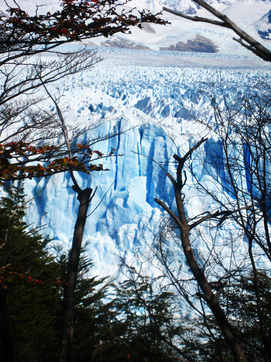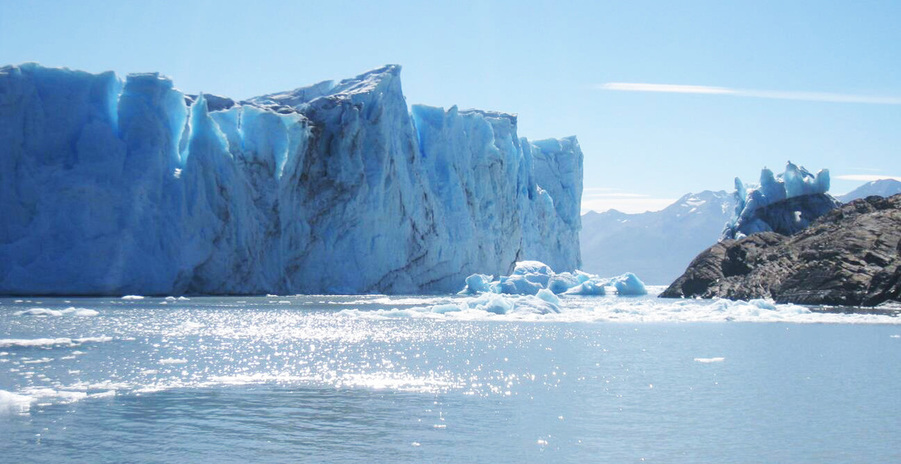Before I lived in South America I’d always figured it was a hot place. And it is, except for the part where it’s really not. There exists a region at the base of Chile and Argentina called Patagonia. At its southernmost tip is the closest you can get to Antarctica without actually being there, and weather-wise, boy do you know it. Thermals people, thermals.
 Photo Credit: Chaille Bos
Photo Credit: Chaille Bos As a person who has spent her adult life thus far saving money and travelling, and then saving money to travel some more, I have been to a lot of places. Seen a lot of spectacular things. But Patagonia has some of the most interesting geography I’ve seen anywhere around the globe (though it's definitely not the easiest to get to unless you like very long drives – I mean five days, no stops).
It also has large glacier fields. It was at these fields I discovered two things.
Right before your eyes, the glaciers constantly shift and when they do, large sections break off and crash spectacularly into the water around them. It’s breath-taking to witness. The sound. The sight. Not the smell, though, ’cause your nose is too cold to smell anything at all.
So you spend your day standing, watching these giant glaciers in the arctic waters with baited breath, waiting for the next crack, fall, and splash. You don’t wait long; it happens every few minutes, but you don’t want to turn away because you just want to see it again and again. And if you look away you could miss it. So tour groups end up huddled like a bunch of overgrown children, watching, wide-eyed, for one section of glacier – and which section will go next? – to crack off and become an iceberg, and the moment it goes, you run to the next stop as quickly as you can so you don’t miss the next one fall.
But there are plenty of times when you don’t make it there in time, and those multiple metre-sized chunks of ice you miss breaking off will always seem bigger and grander than any you'd seen before them. And you’ve just missed it.
So you decide you can’t move. You have to stay and watch, without blinking, because you can’t risk missing it.
Then your eyes get icy Antarctic windburn and, reluctantly, you realise you have to go. You turn your back and walk away.
Right as you do, you hear the loudest crash of the day. You want to turn around, but it’s already too late and so you walk on.
It also has large glacier fields. It was at these fields I discovered two things.
- I officially love glaciers.
- Glaciers make me paranoid.
Right before your eyes, the glaciers constantly shift and when they do, large sections break off and crash spectacularly into the water around them. It’s breath-taking to witness. The sound. The sight. Not the smell, though, ’cause your nose is too cold to smell anything at all.
So you spend your day standing, watching these giant glaciers in the arctic waters with baited breath, waiting for the next crack, fall, and splash. You don’t wait long; it happens every few minutes, but you don’t want to turn away because you just want to see it again and again. And if you look away you could miss it. So tour groups end up huddled like a bunch of overgrown children, watching, wide-eyed, for one section of glacier – and which section will go next? – to crack off and become an iceberg, and the moment it goes, you run to the next stop as quickly as you can so you don’t miss the next one fall.
But there are plenty of times when you don’t make it there in time, and those multiple metre-sized chunks of ice you miss breaking off will always seem bigger and grander than any you'd seen before them. And you’ve just missed it.
So you decide you can’t move. You have to stay and watch, without blinking, because you can’t risk missing it.
Then your eyes get icy Antarctic windburn and, reluctantly, you realise you have to go. You turn your back and walk away.
Right as you do, you hear the loudest crash of the day. You want to turn around, but it’s already too late and so you walk on.



 RSS Feed
RSS Feed
